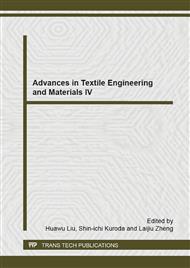p.503
p.507
p.511
p.515
p.521
p.526
p.531
p.537
p.541
A New Method for Word Alignment of Tibetan-Chinese Machine Translation
Abstract:
We propose a new simple but effective method for building Tibetan-Chinese machine Translation corpus and a novel Tibetan-Chinese Machine Translation model integrating Tibetan syntactic cues which is based on the Treebank, this model can be used on the system of Tibetan-Chinese Machine Translation successfully . Keywords: syntactic Treebank; Tibetan syntactic cues ; Machine Translation;
Info:
Periodical:
Pages:
521-525
Citation:
Online since:
October 2014
Authors:
Price:
Сopyright:
© 2014 Trans Tech Publications Ltd. All Rights Reserved
Share:
Citation:


